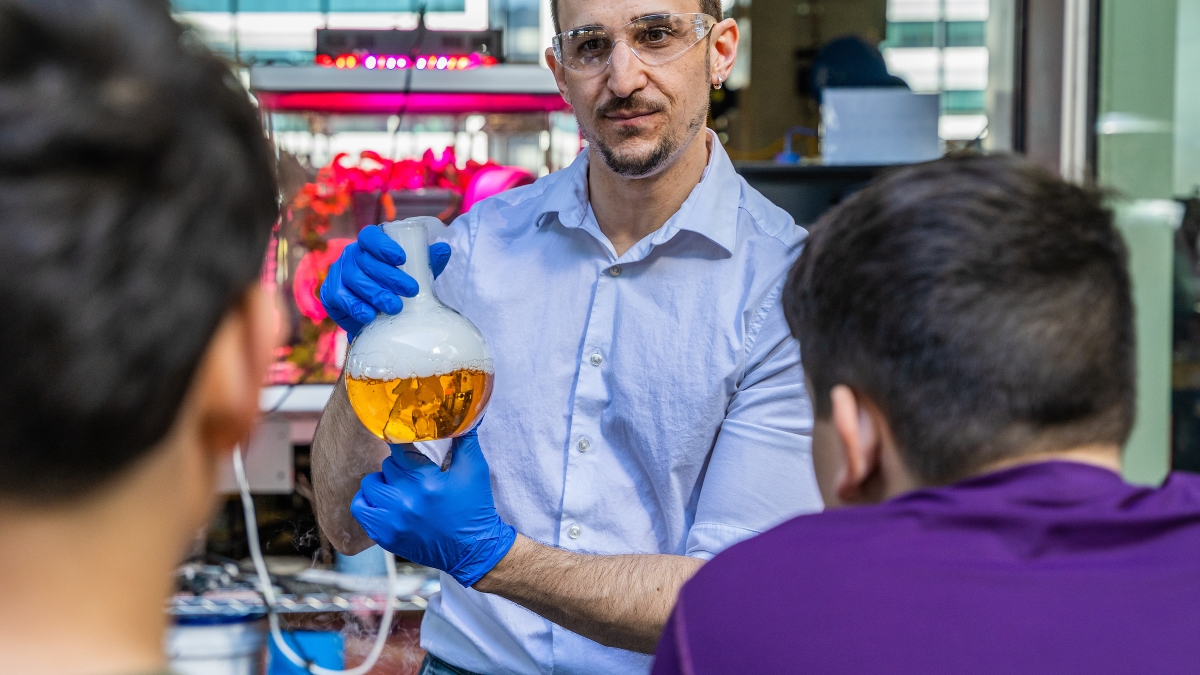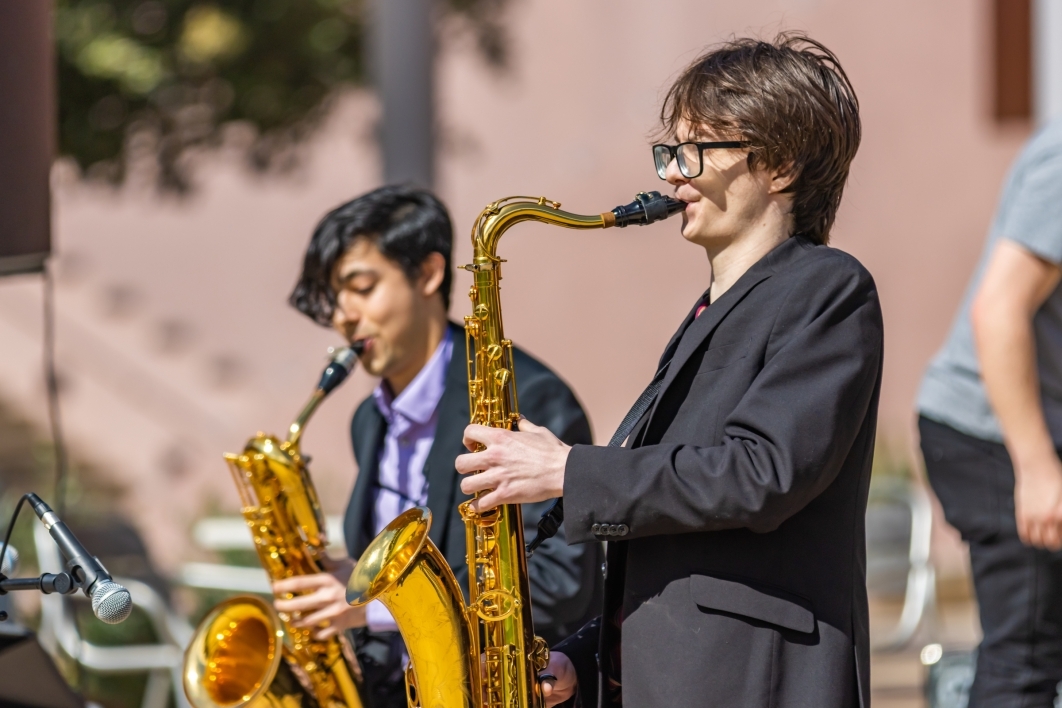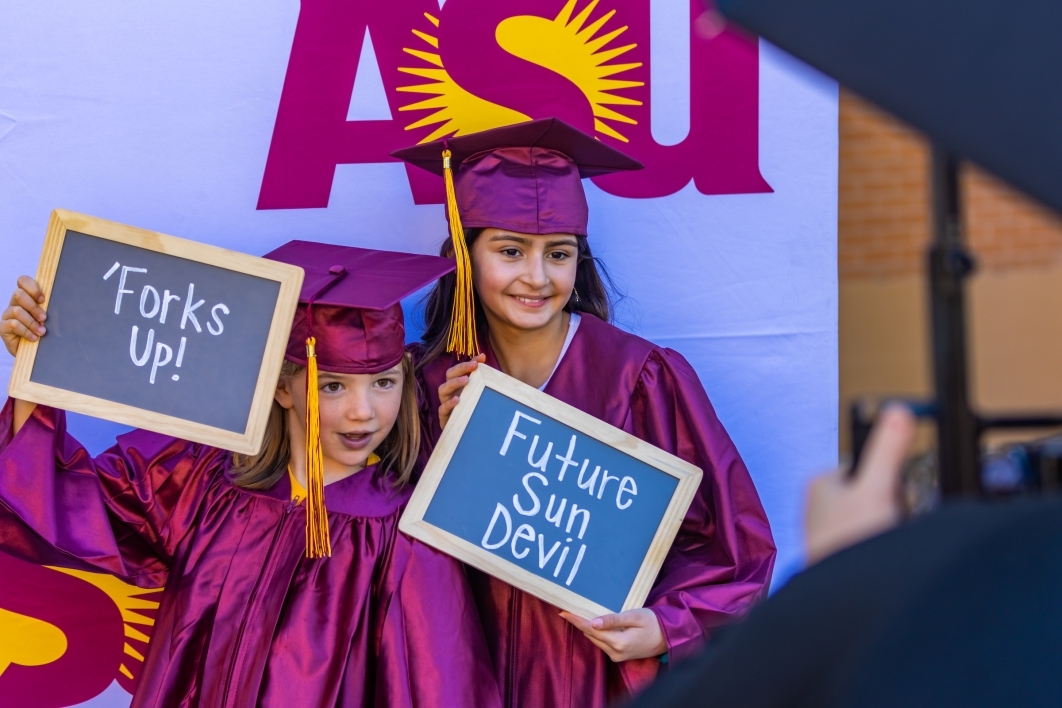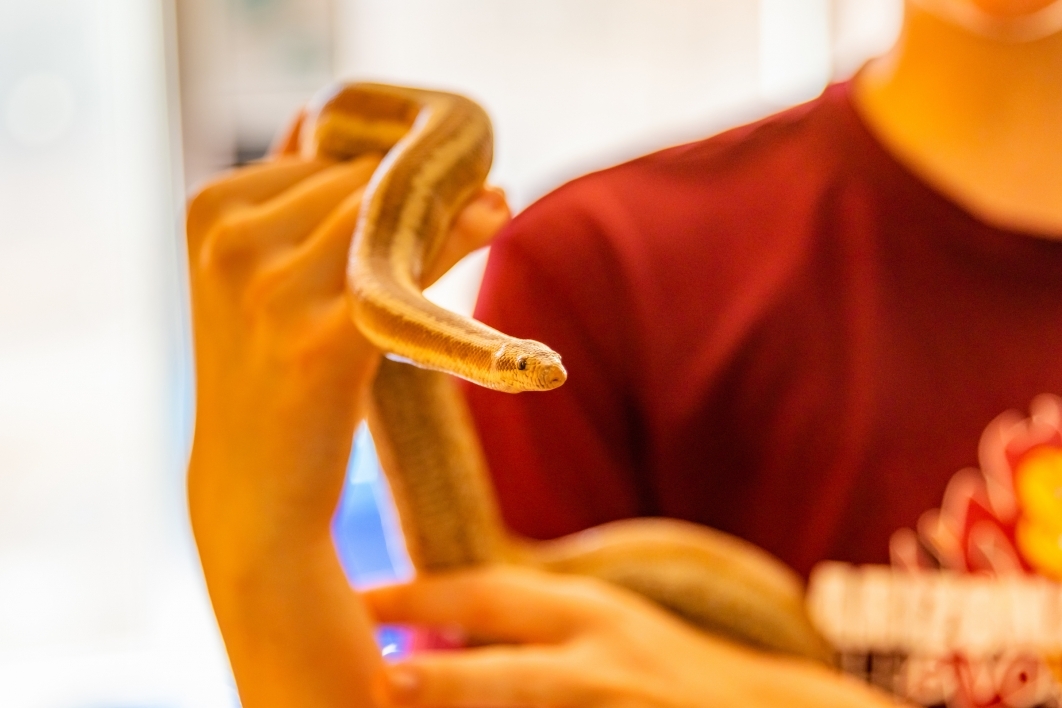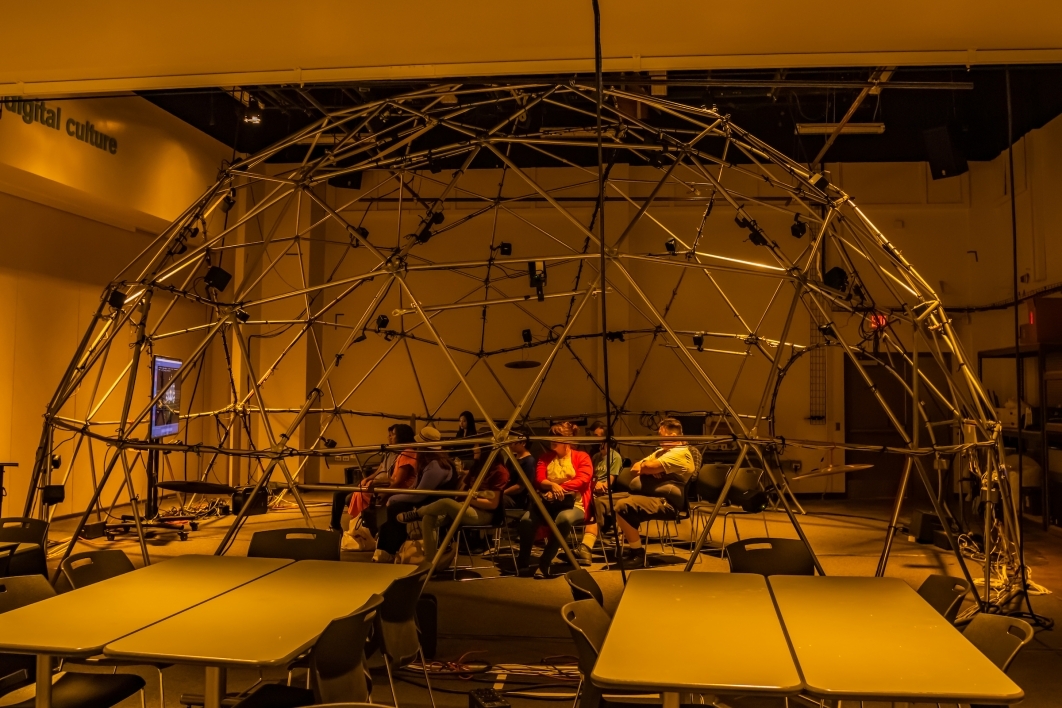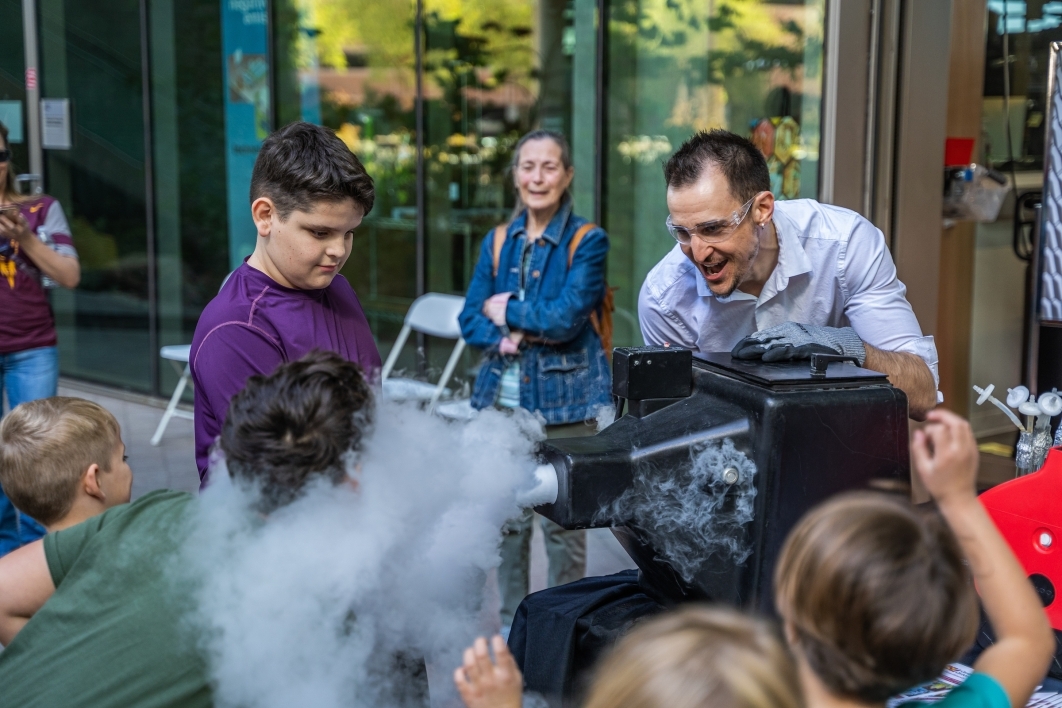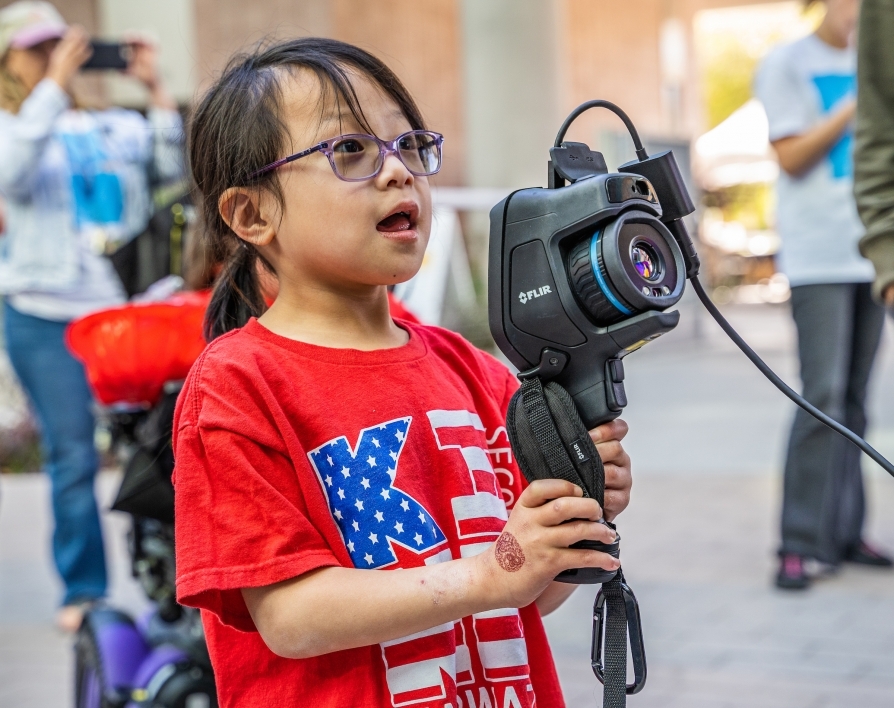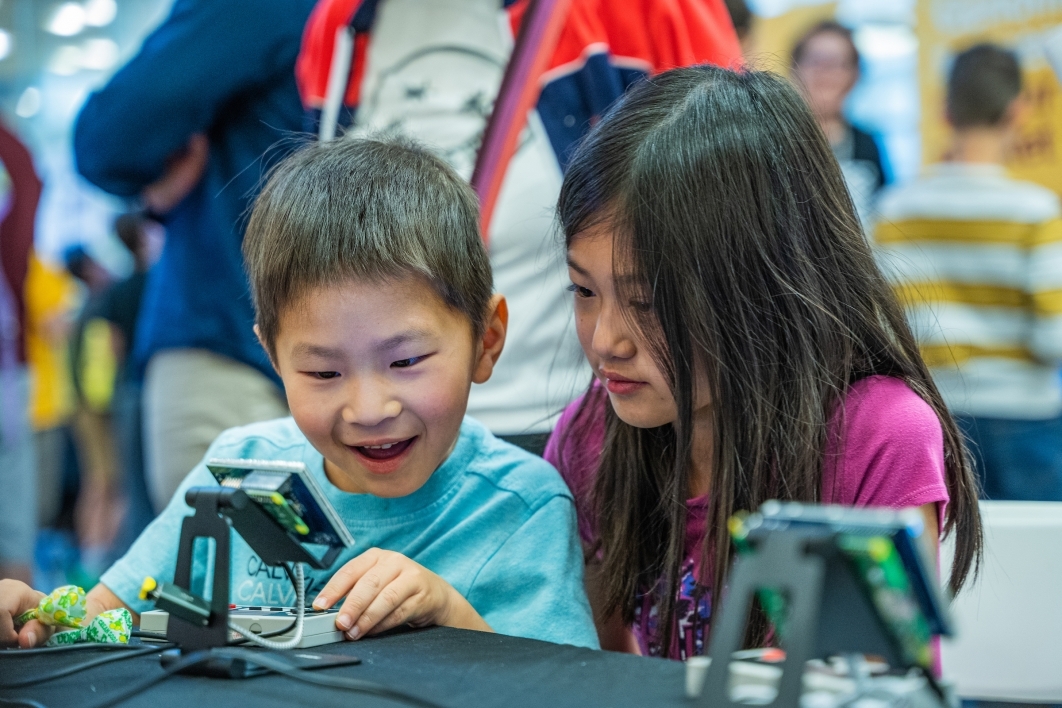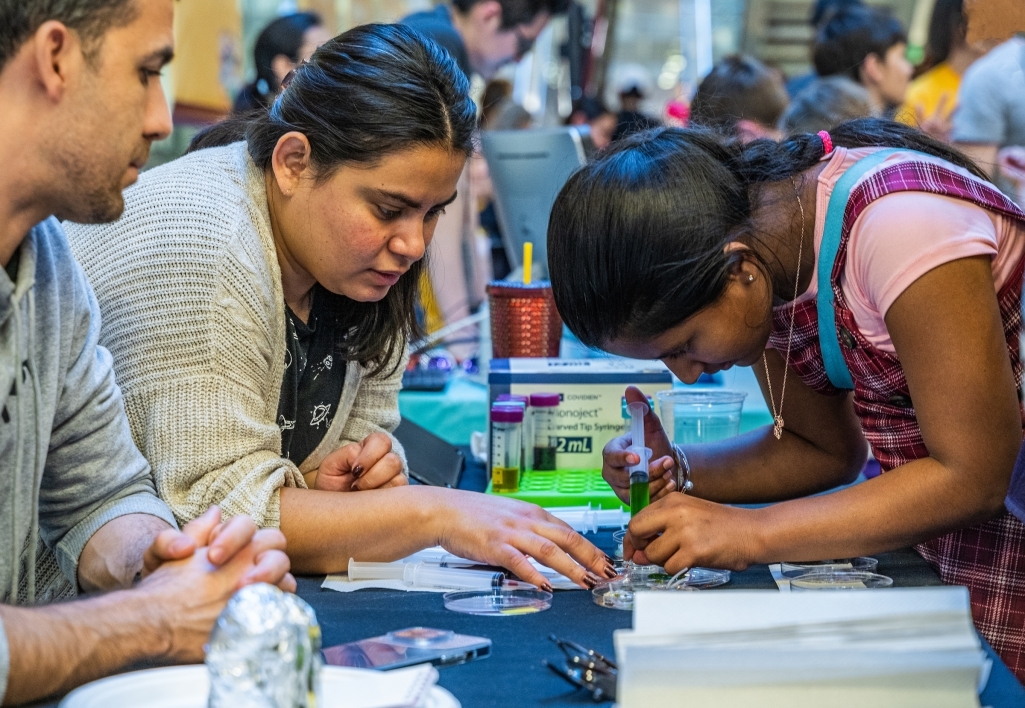Thousands of people descended on Arizona State University’s Tempe campus on Saturday for an afternoon of fun and adventure, but it wasn’t for a football game or sporting event.
ASU Open Door held its final 2023 event, offering adults and children of all ages a behind-the-scenes look at a university committed to excellence and transforming higher education.
RELATED: Check out the Downtown Phoenix campus, West campus and Polytechnic campus events
“We host ASU Open Door to invite the community into our spaces that are normally closed to the public. It’s an opportunity to throw open our doors to show off what happens here,” said Darci Nagy, ASU’s event manager. “We are a university in their neighborhood that they hear about all the time, and this affords them a chance to see why we are the most innovative university in the country and experience what we do on a daily basis.”
Now in its 11th year, the Tempe event featured approximately 250 interactive exhibits produced by ASU professors, staff members and students, covering the fields of art and design, business, culture and language, engineering, health and wellness, humanities, natural and social science, student life and sustainability.
Adults and community members were able to get a look at spaces that house the most innovative buildings and projects at the university, including the Biodesign Institute, ASU’s Sol supercomputer, the Mars Space Flight Facility, the ASU Marston Exploratory Theater and more.
Children could create a comic book, build an urban area, use ancient tools and twine, learn about Hebrew calligraphy, listen to live music, launch bottle rockets and even hold a snake.
Many attendees used the event as an opportunity to introduce their children to the idea of college.
Chandler, Arizona, resident and ASU alum Mark Webster brought his son to the event for two specific reasons.
“I wanted to show my son where I graduated college,” said Webster, who took in a mini-concert and museum exhibit during the first hour. “So when he enters high school, he’s going to have to decide where he wants to go, and this is definitely one of the options for him.”
Sean Webster, a seventh-grade student who attends Bogle Junior High School in the Chandler Unified School District, said there two fields he’s interested in pursuing.
“I want to study either health or physics because I find them really interesting,” said Sean, who was filling up a swag bag with freebies whenever the opportunity arose. “I don’t see too many physicists or doctors, and I want to be one.”
Sean, however, is not singularly focused. He has a musical side to him as well. He and his father listened to a jazz group at ASU’s School of Music with great interest.
“I want to be in one of the orchestras here,” Sean said.
Mirabella resident Susan Yamanaka took in some cool sounds as well. She sat inside an ambisonic sound dome in the Stauffer Communications Arts B building, listening to a piece called “Ice Fields” by Elaine Lillios. The dome is a state-of-the-art space equipped with 45 speakers, allowing for an immersive audio experience.
“Ambisonic audio allows listeners to hear from above your head, below your knee, on the level of your arm and everywhere in between,” said Celia Yang, a first-year doctoral student with ASU’s School of Arts, Media and Engineering. “This gives a composer the ability to put their sounds in a precise location. It will inspire a lot of artists to compose in a different way.”
Yamanaka enjoyed the dome experience even though she had to cover her ears a time or two. But it did help with her mission for the day.
“I live at Mirabella, and we like to take tours of the campus because we are always looking for new places to learn about and experience,” said Yamanaka, a 1976 ASU alumna. “We’re also interested in what students are learning, how the university is using their labs and how we can extend our lifelong education. So today is an ideal day for me to check out all these places for a possible field trip.”
An exhibit set up outside of Coor Hall offered others a trip to the past. The School of Historical, Philosophical and Religious Studies encouraged people to build their own time capsules and messages in bottles, using various supplies.
“With historical, philosophical and religious studies, it’s hard to tie in kid-friendly activities, but this table is a big hit every year,” said Rachel Bunning, a communications specialist with the school. “It’s a nice craft for kids to get them to think about the future, but also the past.”
For Heidi Stevens, the activity was an opportunity to show that history doesn’t always have to be serious or profound. She referenced the meme “I’m Already Tracer,” which stems from a lyric from the song “No Mercy” by The Living Tombstone, and was popularized in a Tik-Tok video.
“It’s a really old meme from 2018 and probably doesn’t make any sense,” said Stevens, a student at Heritage Academy Gateway in Queen Creek. “I’m just looking to get a laugh.”
Top photo: ASU research specialist Matthew Ryan presents a science experiment demonstrating the science behind CO2 capture in front of a crowd of children at ASU Open Door on the Tempe campus on Saturday, Feb. 25. Photo by Alwaleed Alrasbi/Arizona State University
More Science and technology

Science meets play: ASU researcher makes developmental science hands-on for families
On a Friday morning at the Edna Vihel Arts Center in Tempe, toddlers dip paint brushes into bright colors, decorating paper fish. Nearby, children chase bubbles and move to music, while…

ASU water polo player defends the goal — and our data
Marie Rudasics is the last line of defense.Six players advance across the pool with a single objective in mind: making sure that yellow hydrogrip ball finds its way into the net. Rudasics, goalkeeper…

Diagnosing data corruption
You are in your doctor’s office for your annual physical and you notice the change. This year, your doctor no longer has your health history in five-inch stack of paperwork fastened together with…


